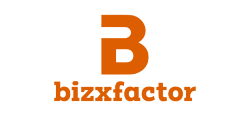Digital marketing refers to the promotion of products or services using digital technologies and online channels. Unlike traditional marketing, which relies on offline methods such as print, radio, and TV, digital marketing leverages the internet and electronic devices to connect with current and potential customers.
It encompasses a wide range of strategies, including SEO (Search Engine Optimization), content marketing, email campaigns, social media outreach, paid advertising, and more. The goal is to reach consumers where they spend most of their time—online.
Whether you’re a small business or a large enterprise, digital marketing allows you to engage your audience, build brand awareness, and drive sales in a measurable and cost-effective way.
Exploring Various Digital Marketing Channels
Digital marketing consists of multiple online channels that businesses can use depending on their goals and target audience. The most common include:
- Search Engine Optimization (SEO): Optimizing your website content to rank higher in search engine results and drive organic traffic.
- Pay-Per-Click Advertising (PPC): Running ads on platforms like Google Ads or Bing Ads and paying only when someone clicks.
- Social Media Marketing: Using platforms like Facebook, Instagram, LinkedIn, and X (formerly Twitter) to reach and interact with audiences.
- Content Marketing: Creating valuable, relevant content (blogs, videos, infographics) to attract and retain a clearly defined audience.
- Email Marketing: Sending targeted emails to nurture leads, promote products, and engage existing customers.
- Affiliate Marketing: Partnering with third-party affiliates who promote your products for a commission on sales generated through their efforts.
- Influencer Marketing: Collaborating with online influencers who have a large following to promote your brand.
Types of Digital Marketing
Digital marketing can be broadly categorized into the following types:
- Inbound Marketing: Attracting customers through content and interactions that are helpful and relevant (e.g., SEO, content marketing).
- Outbound Marketing: Pushing out messages to potential customers, such as through display ads or cold emails.
- B2B Digital Marketing: Strategies tailored for businesses selling to other businesses.
- B2C Digital Marketing: Targeting individual consumers with personalized and engaging content.
- Mobile Marketing: Reaching audiences through SMS, mobile apps, and mobile-friendly websites.
- Video Marketing: Using platforms like YouTube, TikTok, or embedded videos on websites to capture attention and convey messages quickly.
Each type serves different objectives but can be integrated for maximum impact.
How Does Digital Marketing Work?
Digital marketing works by using online platforms to reach target audiences with personalized and strategic messages. Here’s a simplified process:
- Identify Goals: Whether it’s lead generation, brand awareness, or e-commerce sales.
- Know Your Audience: Use data and research to understand buyer personas.
- Choose Channels: Based on where your audience spends time (e.g., Instagram for younger audiences, LinkedIn for professionals).
- Create Content: Develop compelling and informative content suited to each channel.
- Launch Campaigns: Distribute the content through SEO, paid ads, social media, or email.
- Measure & Optimize: Use tools like Google Analytics or HubSpot to track performance and adjust strategies accordingly.
Digital marketing is data-driven, allowing marketers to test, track, and refine campaigns in real-time.
The Benefits of Digital Marketing
Digital marketing offers numerous advantages over traditional methods:
- Cost-Effective: Reach a wider audience at a lower cost compared to TV or print.
- Measurable Results: Use analytics to track ROI, conversion rates, traffic sources, and more.
- Targeted Audience: Segment and personalize campaigns based on demographics, behaviors, and interests.
- Global Reach: Expand your business beyond geographical boundaries.
- Higher Engagement: Interact directly with customers through comments, shares, likes, and messages.
- Faster Deployment: Launch campaigns quickly and make instant updates.
Challenges in Digital Marketing
Despite its benefits, digital marketing also comes with challenges:
- High Competition: The online space is saturated, making it harder to stand out.
- Changing Algorithms: Platforms like Google and Facebook frequently update their algorithms, impacting reach and visibility.
- Ad Fatigue: Consumers are bombarded with ads and may tune out repetitive or irrelevant content.
- Data Privacy Concerns: With increased regulations like GDPR, marketers must handle user data responsibly.
- Technical Complexity: Managing multiple tools, platforms, and metrics can be overwhelming.
- Skill Gap: Requires expertise in content creation, analytics, SEO, and paid advertising.
Addressing these challenges requires continuous learning, agility, and the right digital marketing strategy.
Conclusion
Digital marketing is an essential component of modern business strategy. From SEO and social media to email and paid advertising, it offers dynamic and measurable ways to engage with your audience. While it comes with its share of complexities, the benefits far outweigh the challenges.
By understanding what digital marketing is and how it works, businesses can leverage the right channels to connect with customers, boost visibility, and drive growth in a digital-first world.











